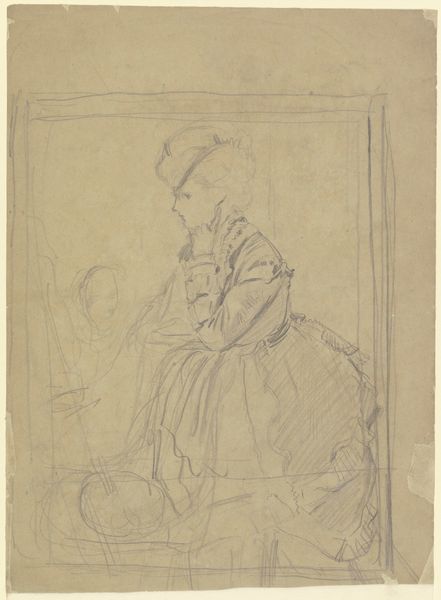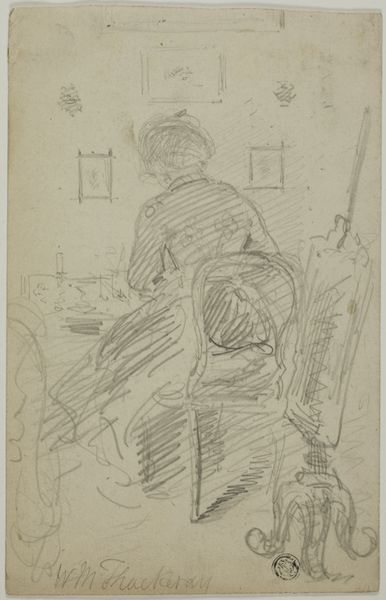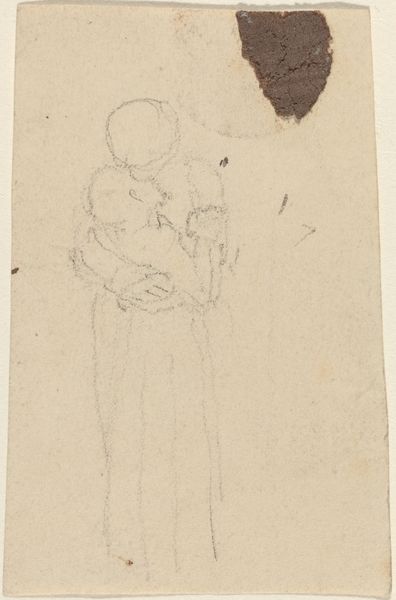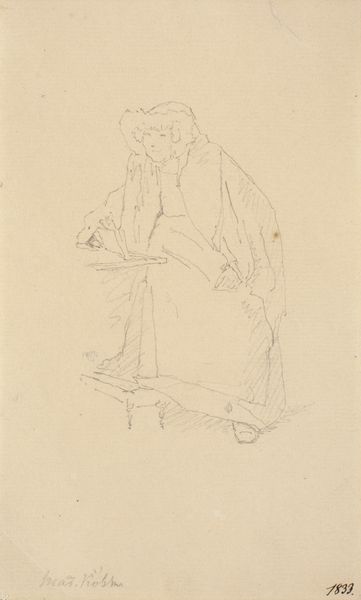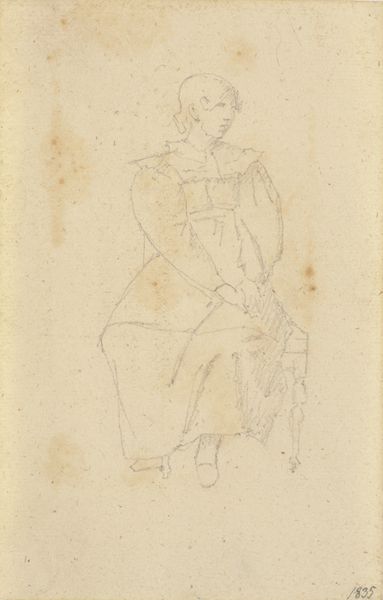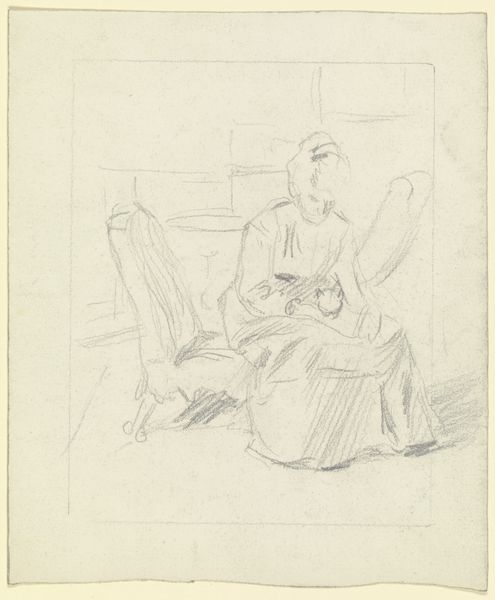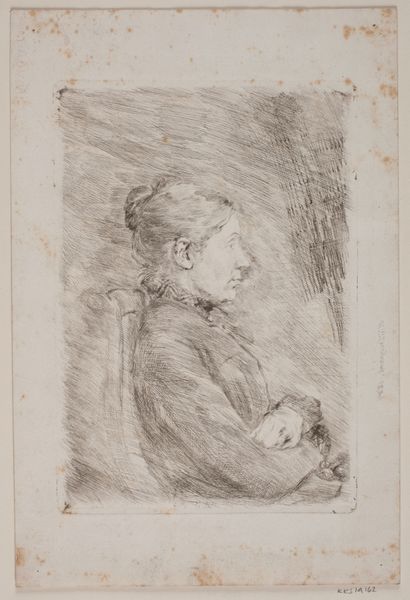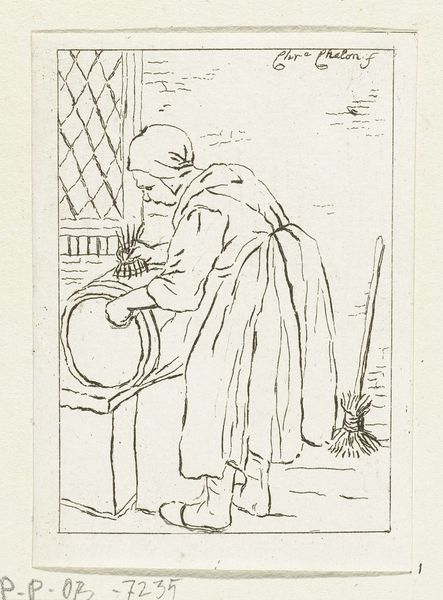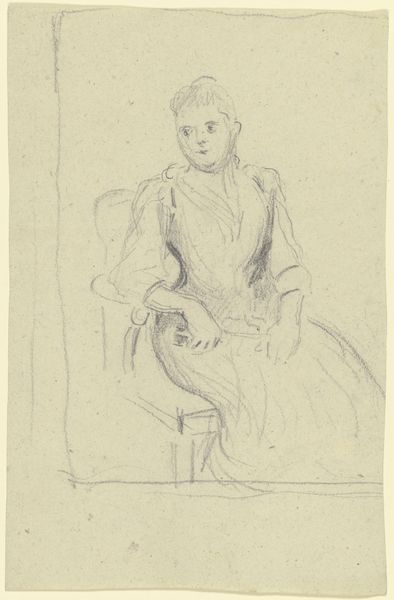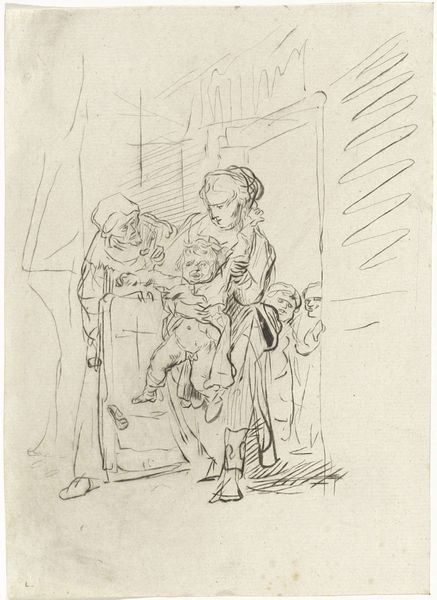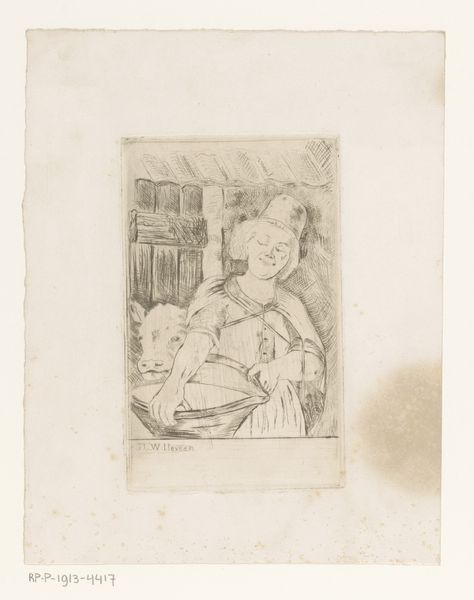
drawing, pencil
#
drawing
#
romanticism
#
pencil
#
academic-art
Dimensions: 126 mm (height) x 82 mm (width) (bladmaal)
Curator: Christen Købke’s "Ung pige siddende ved et vindue," made between 1810 and 1848, offers us a glimpse into a private world rendered in delicate pencil strokes. Editor: My initial impression is of quiet contemplation. The young woman seems poised between the interior space and the world outside that window, almost ethereal. Curator: The technique is indeed crucial here. Observe the visible labor, the layering of pencil, the tentative lines. What does it reveal about artistic practice at the time? About the artist’s intent? Was it simply a study, or something more intentional? We should also consider that paper and pencils, while common, were commodities, impacting accessibility and thus the creation process itself. Editor: Absolutely. And think about the sitter herself. Who was this young woman? The lack of idealization in her features suggests a level of intimacy—perhaps a family member or someone from Købke’s close circle. How did class, gender and social status affect her position, quite literally seated by the window but figuratively maybe at a threshold in her own life? Curator: We can analyze the window, of course, in terms of its materiality and construction. Windows themselves were a sign of prosperity in certain eras, a material culture point. Its placement and prominence speaks to domestic architecture during that time as well. Editor: Right, and the window as a symbol. Think about art history, windows constantly represent transition, longing, and connection or disconnection with the outside world. Here, it emphasizes this young woman's liminal position and perhaps even the limited choices available to her as she gazes at the world through panes of glass. Curator: Ultimately, thinking about the choices around the materials offers interesting interpretations. Did he want to democratize art, making it accessible? Or, by making such works did he seek an alternative system away from royal art or the Academy? Editor: This drawing is such a poignant testament to the power of the everyday. I see an opening for discussions of identity, interiority, and female experiences within that historical context, even with minimal material. Curator: Absolutely. Seeing Købke’s choice of material is also about seeing his art production and creative choices as part of its specific time and context.
Comments
No comments
Be the first to comment and join the conversation on the ultimate creative platform.
